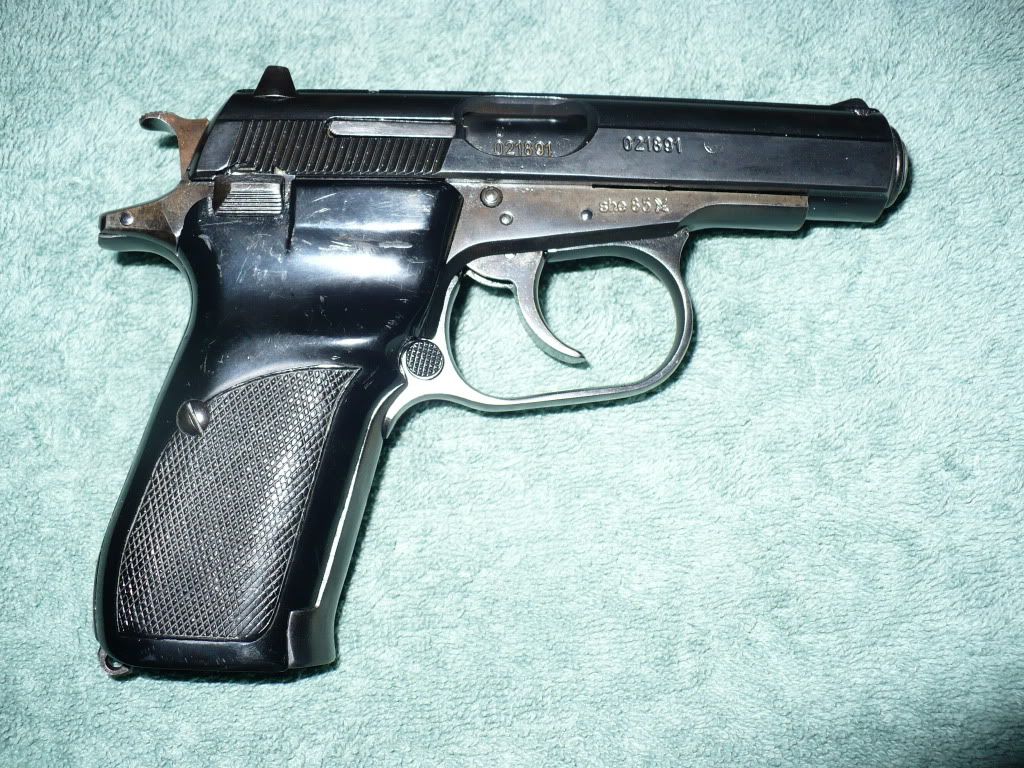Rust bluing is a type that can be done without a lot of equipment and it's a durable blue, but it's more a satin blue without the brilliant shine of Colt's Royal Blue.
For actual bluing formulas, I'd recommend buying this book from Brownell's:
FIREARMS BLUING AND BROWNING - Brownells
Here's a couple of formulas. Again, hot salts gun bluing is DANGEROUS.
You have to add distilled water, which is how the temperature is regulated.
When water contacts the chemicals you can get violent explosions that can splatter the chemicals. It WILL eat skin and eyes instantly.
The Roy Dunlap formula:
sodium nitrate 1/4 oz
potassium nitrate 1/4 oz
bichloride of mercury 1/2 oz
potassium chlorate 1/2 oz
distilled water 10 oz
spirits of nitre 1/2 oz
Here's several other home brews:
5 pounds lye
2 1/2 pounds ammonium nitrate
per gallon of water
---------------------------------------
65% Lye (aka sodium hydroxide)
35% Potassium nitrate (aka saltpeter)
Bath Formula
Ingredient Chemical Weight Weight
Materials Symbol Measure Ratio One Gallon
Water (softened) H20 4 Pounds 64 5.2 Pounds
Sodium Hydroxide NaOH 4 Pounds 64 5.2 Pounds
Sodium Nitrate NaNO3 1 Pound 16 1.3 Pounds
Sodium Nitrite NaNO2 1 Ounce 1 1.3 Ounces
Some Primary Hazards
(A partial listing)
These chemicals can be dangerous. NaOH ("Caustic") will rapidly attack flesh, clothing and many metals. Spills should be flushed quickly with vinegar to neutralize the caustic and minimize damage. Mix dry caustic into the water in 4 or 5 small steps to avoid boiling the solution, or use commercial 50% caustic solution. Wear caustic resistant gloves, aprons and eye protection at all times. Don’t use bore plugs, which will splatter hot caustic if they pop out. Dry NaNO2 and NaNO3 can be explosive, just like lawn fertilizer.
Bath Operation
The solution tanks must be un-galvanized iron, steel or stainless steel, with welded seams. Soldered or brazed seams will dissolve, ruining solution, tanks, and whatever gets leaked on. Adjust the bath to boil at 275 F (135 C) to 302 F (150 C) by adding water slowly through a large fine steel mesh to catch spattering caustic. Don’t go over 310 F (155 C), or the solution will be damaged. Turning the heat down won’t work, as the bath must boil gently. Handle parts with steel wire hooks or tongs. Degrease in a hot detergent or caustic solution and rinse well. Then put them in the hot bath right away. Hang them away from the sides or bottom of the tank, but small parts can be placed in a steel wire basket. Let them boil for ~ 10 minutes, then remove and rinse in clean cold running water. Check color after scrubbing with clean, degreased “0000" steel wool. Return to the bath until the color is good. Rinse thoroughly, dry, oil and reassemble.
Trouble Shooting
Polish your metal well. Blueing won’t cover poor polishing. Poorly polished white steel becomes poorly polished black steel. Protect polished parts from rust with light oil until ready to degrease and blue them. Anything a magnet won't pull on (like wood, glass, aluminum, plastic or stainless steel) won’t blue, so don't put it in the bath. It could dissolve and ruin both the part and the bath. If a used bath is heated but won’t work, try adding a little more caustic or nitrate.
No color, or red or purple tones can be due to low temperature, copper contamination, low NaNO3, high carbon alloys or too little time in the bath. Green or pale blue colors can be caused by low temperature or not enough boiling action in the bath. Splotchy or un-colored spots can be caused by poor cleaning or oil contamination. Sometimes this can be fixed while blueing by scrubbing with degreased “0000" steel wool. A powdery black that scrubs off is caused by a worn out bath. No color can be caused by a worn-out or overheated bath, wrong amounts of chemicals or (in old baths) by caustic being used up by CO2 in the air.








